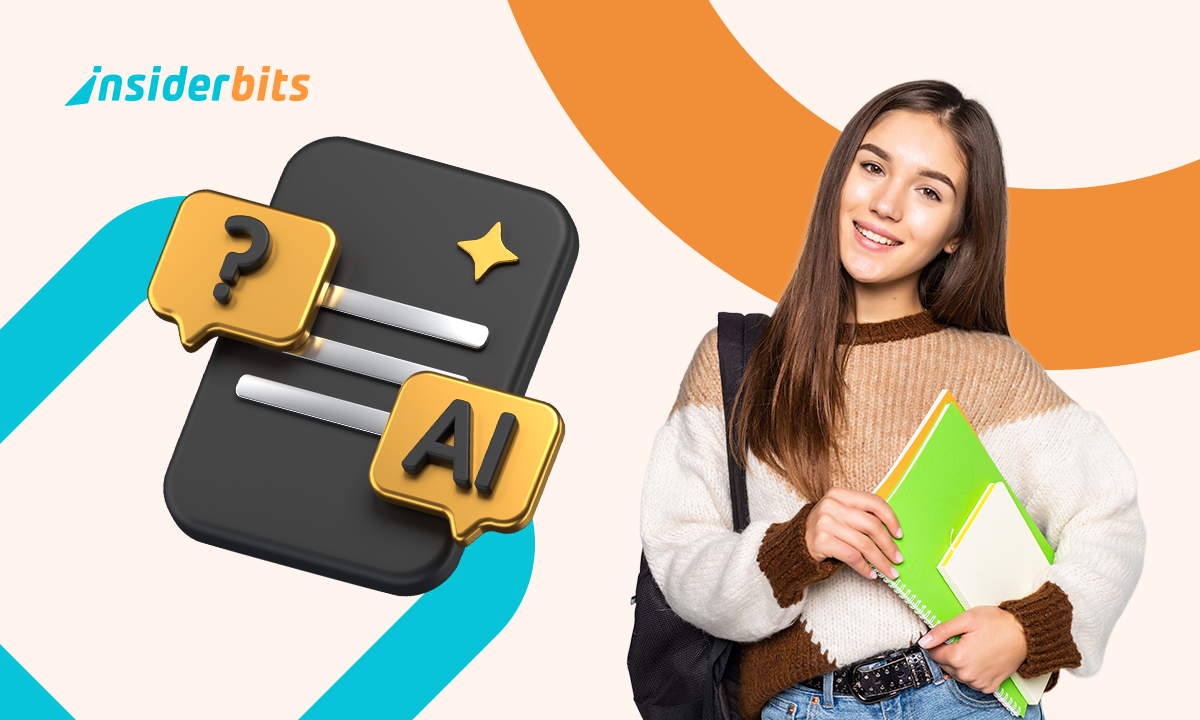You won’t really read that 300-page textbook or listen to that two-hour lecture recording for the third time, let’s face it. Instead of hours, what if you could glean insights in minutes? With the help of study note tools, students can avoid information overload by converting complex academic content into easily understood summaries that won’t put them to sleep.
While you get another cup of coffee, modern AI can summarize articles, transcribe videos, and analyze PDFs. However, before you replace all of your study sessions with robot assistants, let’s examine which tools are effective, when to use them, and how to prevent outsourcing all of your thought processes to algorithms and turning your brain into mush.
- Applicazioni di guida allo studio per uno studio efficace
- AI Study App: Review of the Uknow.AI Homework & Math Solver App
- Study At Home: The Best Homeschooling Apps
Why you should turn PDFs into study notes with AI
The average college student encounters over 100 pages of reading per week—a recipe for either burnout or creative skimming. AI study notes solve three universal student problems:
- Time compression: get through material 3-5x faster;
- Focus optimization: isolate only the testable concepts;
- Active recall: transform passive reading into Q&A formats.
As noted in La Trobe University’s guide, these tools work best when used to preview material before class or review afterward—not as complete replacements for engagement.
Best tools to summarize articles, books, and lectures
Not all AI note-takers are created equal. Here’s how the top contenders compare:
Mindgrasp (web-based) specializes in video lectures, automatically generating timestamps for key concepts.
Upload a Zoom recording and get searchable study notes with highlighted terms. Perfect for auditory learners drowning in lecture videos.
Informazioni
Piattaforma: Web
Price: $9.99/month
Free trial: 3 documents
SummarizeBot (web-based) handles technical papers beautifully, preserving equations and diagrams while condensing text.
Its unique “knowledge graph” shows how concepts connect—ideal for complex subjects like organic chemistry.
Informazioni
Piattaforma: Web
Price: $12/month
Free trial: 5 summaries
Scholarcy (browser extension) creates flashcard-ready study notes directly from research papers. It even identifies open questions and conflicting findings—a research student’s dream.
Informazioni
Piattaforma: Chrome extension
Price: $7.99/month
Free trial: 10 summaries
How to use AI to study smarter and faster
These tools aren’t magic—they require strategy:
- Pre-process: skim manually first to prime your brain;
- Customize outputs: specify “explain like I’m 15” or “technical summary”;
- Verify accuracy: cross-check 1-2 key points against source material;
- Transform: use AI output as raw material for your own handwritten notes.
A Reddit thread reveals most students use AI for first passes, then add personal annotations.
Tips for students who learn better with short notes
If traditional note-taking never worked for you, AI can adapt to your style:
For visual learners (aka the “color-coding cult”)
Your ideal AI study notes should look like a rainbow exploded on the page. Most tools let you customize output with:
- Color-coded bullet points by topic;
- Emoji markers for different concept types;
- Built-in mind mapping that shows connections visually.
Pro tip: use Scholarcy’s “visual summary” feature to automatically generate concept maps from dense papers. The spatial arrangement helps your brain file information where it actually sticks.
For auditory learners (the “just tell me” crowd)
If you retain more from podcasts than textbooks, transform those AI study notes into audio:
- Use your phone’s text-to-speech to create custom “lectures” at 1.5x speed;
- Have tools like Mindgrasp timestamp key moments in lecture recordings;
- Record yourself reading summaries, then listen while commuting.
As nursing students discovered on Reddit, pairing AI summaries with audio review boosted their pharmacology retention by 40%.
For kinesthetic learners (fidget spinners unite)
Your hands need to be involved, so use AI as phase one:
- Generate concise bullet points;
- Physically rewrite them on sticky notes;
- Arrange on your wall to create “living” notes you can touch and rearrange.
The act of rewriting—not just reading—activates motor memory. Bonus: those colorful sticky note mosaics make great Zoom backgrounds to impress your study group.
For the chronically time-crunched
When your exam is tomorrow, and you’ve just opened the textbook:
- Command your AI tool: “Create 10 test questions from this chapter”;
- Specify difficulty level (“make some questions tricky”);
- Export to Quizlet for instant practice tests.
Tools like SummarizeBot can even identify likely exam topics based on professor lecture patterns. It’s not mind reading—just very good pattern recognition.
For more unconventional hacks, our guide to Microsoft Copilot shows how to combine AI tools for maximum efficiency.
Because in the end, the best study system is the one you’ll actually use—even if that means rainbow-colored, emoji-studied, audio-enhanced chaos that makes your professor shudder.
When to use AI notes (and when not to)
AI study notes shine for:
- Processing prerequisite material you already understand;
- Reviewing recordings after attending live lectures;
- Comparing multiple sources on the same topic.
They fail when:
- Learning fundamentally new concepts;
- Subjects require nuanced interpretation;
- Professors test on obscure details.
As nursing students noted on Reddit, AI can’t replace clinical judgment—but it can save hours of pharmacology memorization.
The smart student’s edge
Used strategically, AI study notes are the difference between drowning in materials and actually learning.
They’re not about working less—they’re about working smarter to focus your limited brainpower where it matters most.
Now, if you’ll excuse me, I have a 50-page reading to summarize before my next coffee break.





